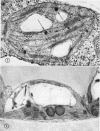Abstract
δ-Tocopherylquinone (δTQ) content was determined in tobacco and yellow maple leaves, green ivy leaves and cactus tissues. It was found that the concentration of δ-TQ was highest in mature or senescent tissues, such as white tobacco leaves (0.02 μmole/g dry wt) while its detection was uncertain in young, green leaves from the apex of tobacco plants. Fractionation by centrifugation of senescent tobacco leaves showed that the osmiophilic globule fraction was enriched in δ-TQ. Electron microscope studies of young, mature and senescent tobacco tissues showed progressive changes in the size and number of osmiophilic globules. After chloroplast breakdown in senescent tobacco leaves, these globules became the predominant constituents of the organelle. δ-TQ which is associated with osmiophilic globules may play a role in the development of plants, particularly during senescence.
Full text
PDF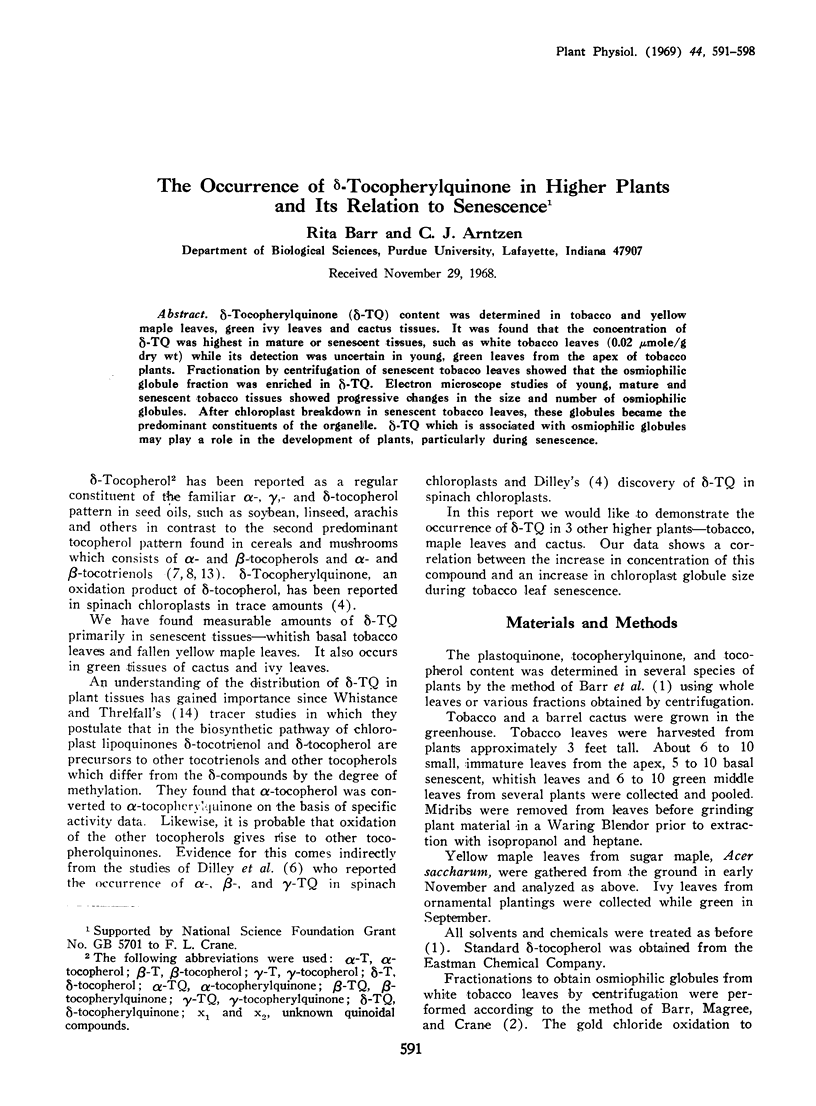
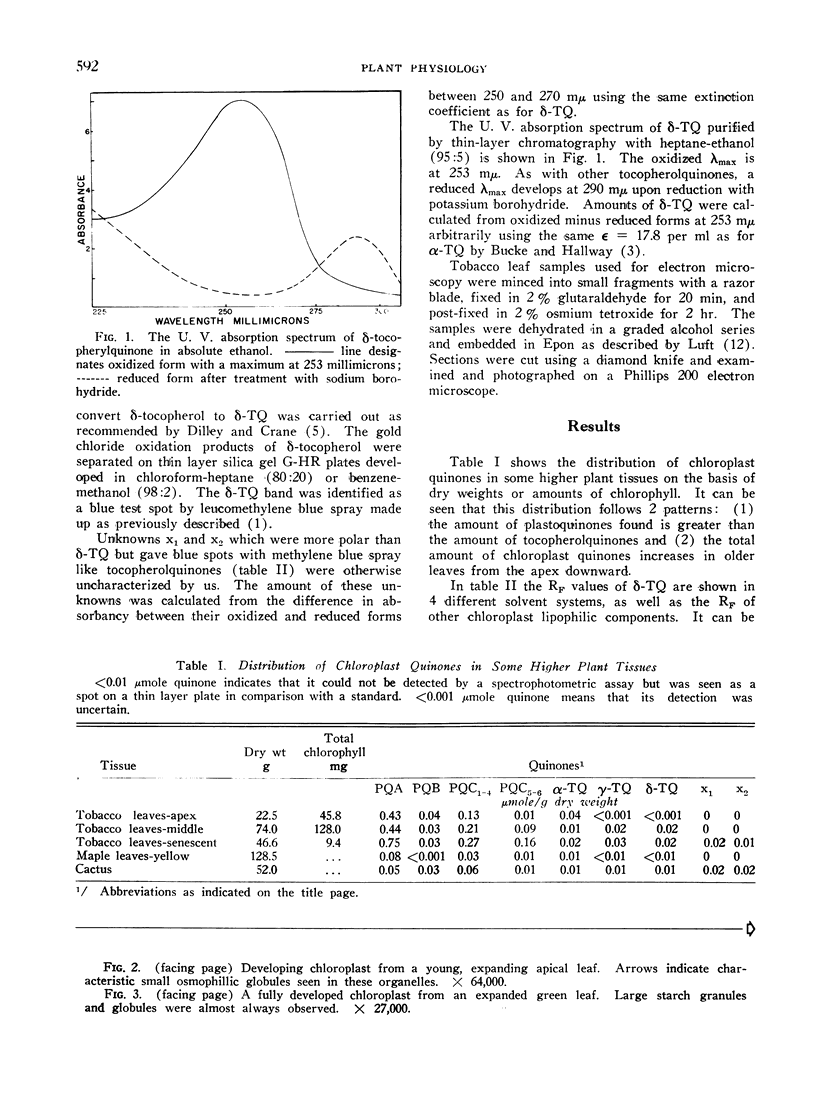
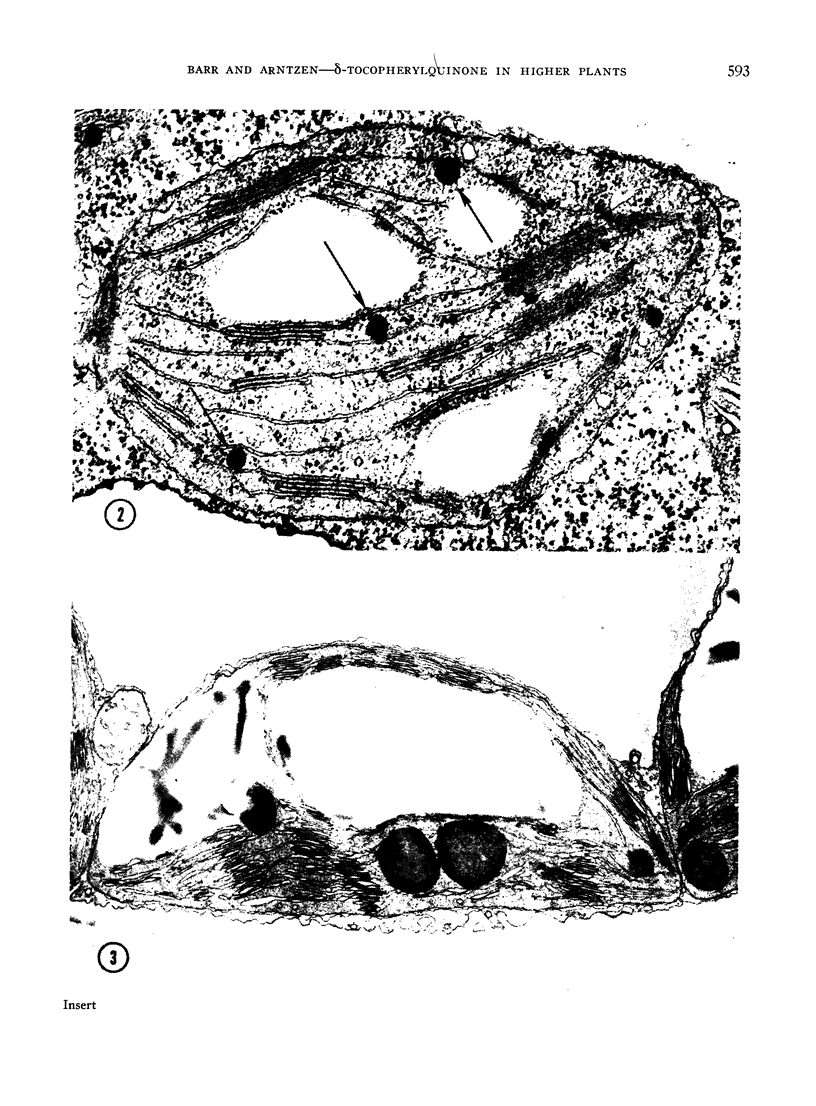

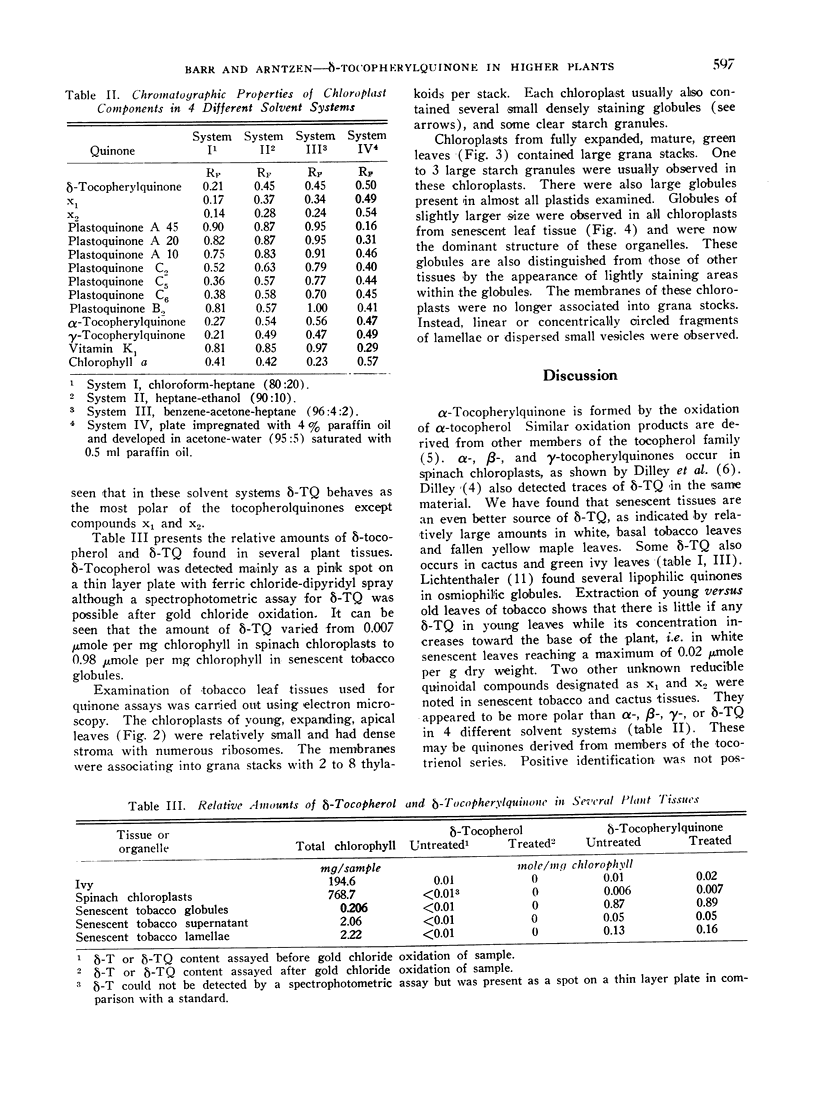
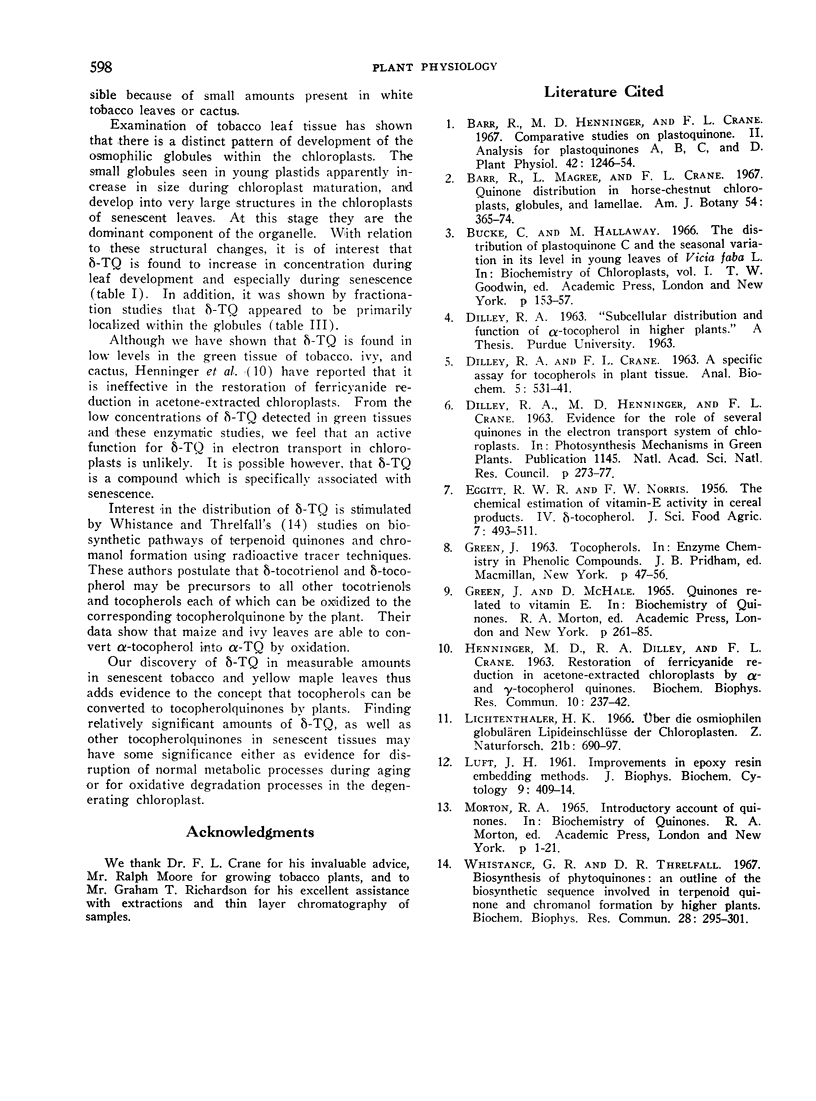
Images in this article
Selected References
These references are in PubMed. This may not be the complete list of references from this article.
- Barr R., Henninger M. D., Crane F. L. Comparative Studies on Plastoquinone II. Analysis for Plastoquinones A, B, C, and D. Plant Physiol. 1967 Sep;42(9):1246–1254. doi: 10.1104/pp.42.9.1246. [DOI] [PMC free article] [PubMed] [Google Scholar]
- DILLEY R. A., CRANE F. L. A specific assay for tocopherols in plant tissue. Anal Biochem. 1963 Jun;5:531–541. doi: 10.1016/0003-2697(63)90073-3. [DOI] [PubMed] [Google Scholar]
- HENNINGER M. D., DILLEY R. A., CRANE F. L. Restoration of ferricyanide reduction in acetone-extracted chloroplasts by beta and gamma tocopherol quinones. Biochem Biophys Res Commun. 1963 Feb 6;10:237–242. doi: 10.1016/0006-291x(63)90423-6. [DOI] [PubMed] [Google Scholar]
- LUFT J. H. Improvements in epoxy resin embedding methods. J Biophys Biochem Cytol. 1961 Feb;9:409–414. doi: 10.1083/jcb.9.2.409. [DOI] [PMC free article] [PubMed] [Google Scholar]
- Whistance G. R., Threlfall D. R. Biosynthesis of phytoquinones: an outline of the biosynthetic sequences involved in terpenoid quinone and chromanol formation by higher plants. Biochem Biophys Res Commun. 1967 Aug 7;28(3):295–301. doi: 10.1016/0006-291x(67)90308-7. [DOI] [PubMed] [Google Scholar]



